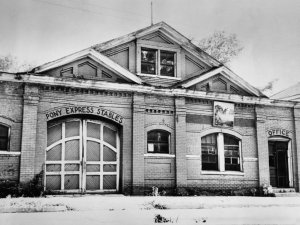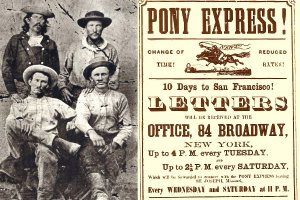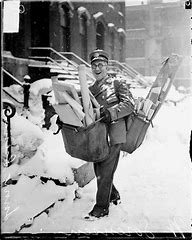More HERE.

The inauguration of domestic parcel post service by the United States Postal Office in 1913 was an epochal event in the lives of thousands of Americans, especially those residing in far-flung areas of the country. All of a sudden, commodities such as foodstuff, medicines and other modern goods not easily available in rural areas were as close as the next post office.
Customers were able order goods and products from businesses located hundreds of miles away in distant cities and have them delivered directly to their homes. Likewise, farmers were able to ship local produce directly to the consumer, saving both time and money.
Within the first five days of service, over four million parcel post packages were mailed and delivered. In the first six months, three hundred million packages were mailed. Mail order businesses exploded in growth.
In Uintah County, in northeastern Utah, the Vernal Post Office was inundated with parcels. By 1916, an average of two tons were arriving per day, forcing the postmaster and his assistant to put 15 hours a day trying to keep up. Vernal is located about 125 miles east of Salt Lake City, as the crow flies, but owning to the high desert valley bordered by mountains and cliffs, the actual trip is nearly 400 miles long.
Parcels from Salt Lake City first travel via the Denver and Rio Grande Railroad to Mack in Colorado—a distance of 272 miles—then back into Utah, arriving at Watson by way of a narrow gauge railroad. The final 54 miles to Vernal is made on trucks. It cost the post office a fortune hauling parcels to Vernal. The June 2, 1916, issue of The Vernal Express estimated, conservatively, that the government was losing "between $25,000 and $30,000 annually” delivering parcels to Vernal…and it was about to get worse.

Photo credit: Zions Bank








